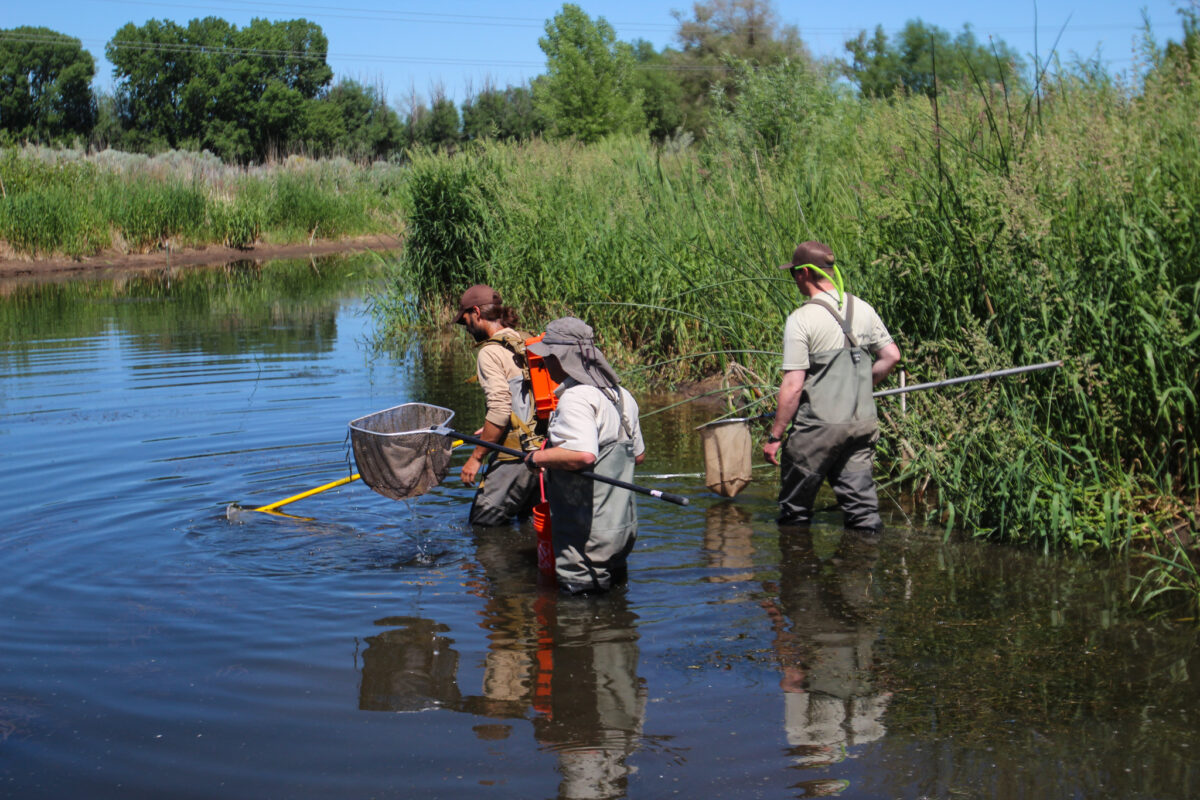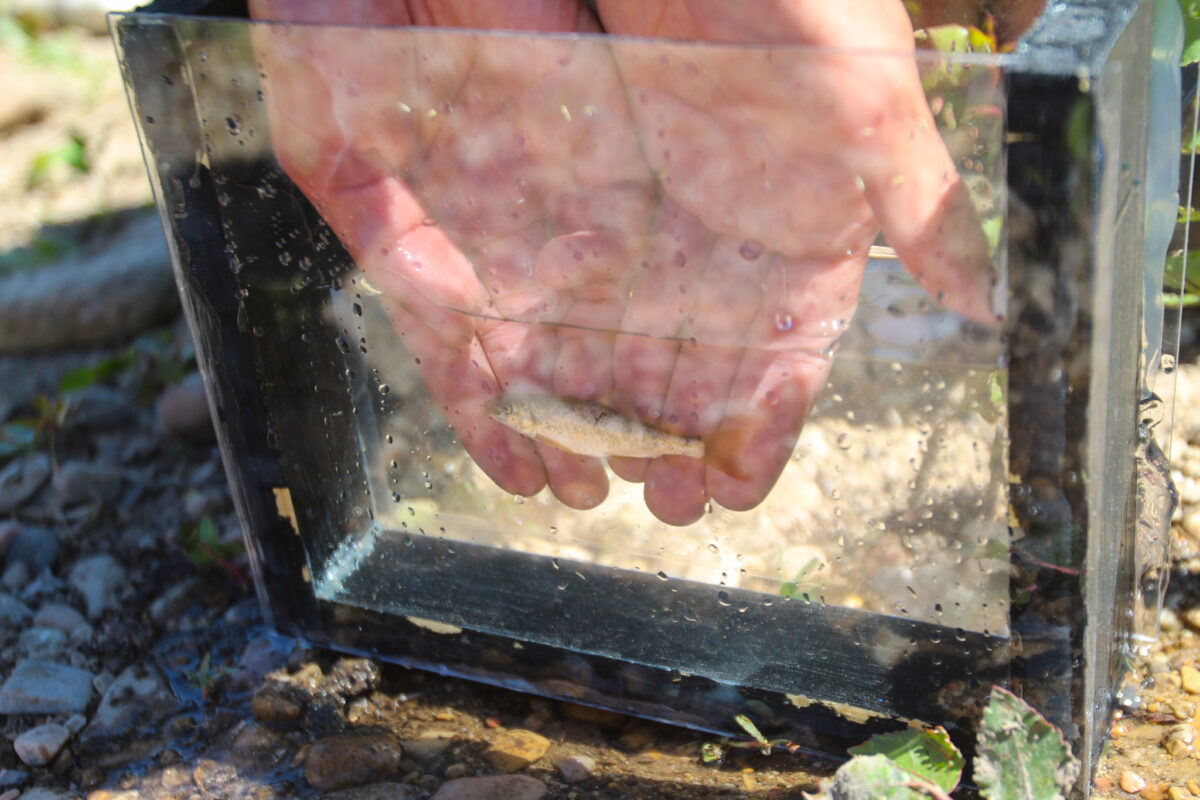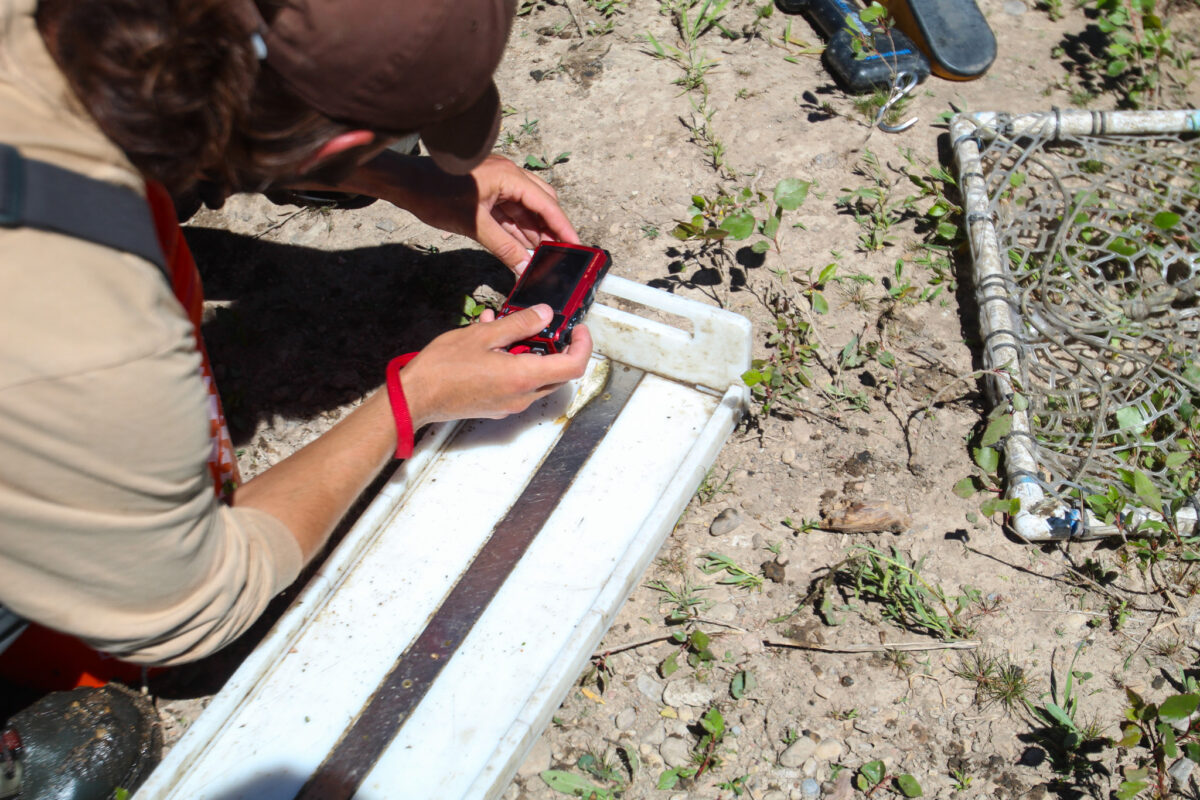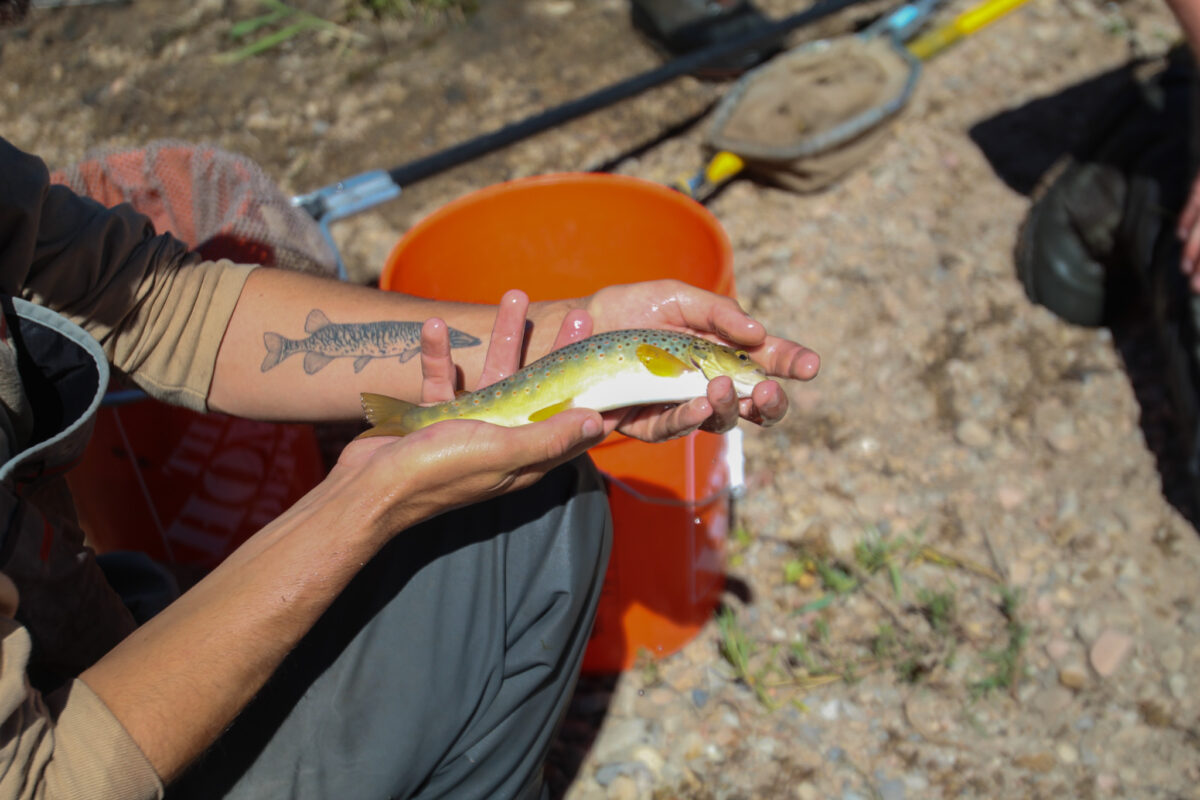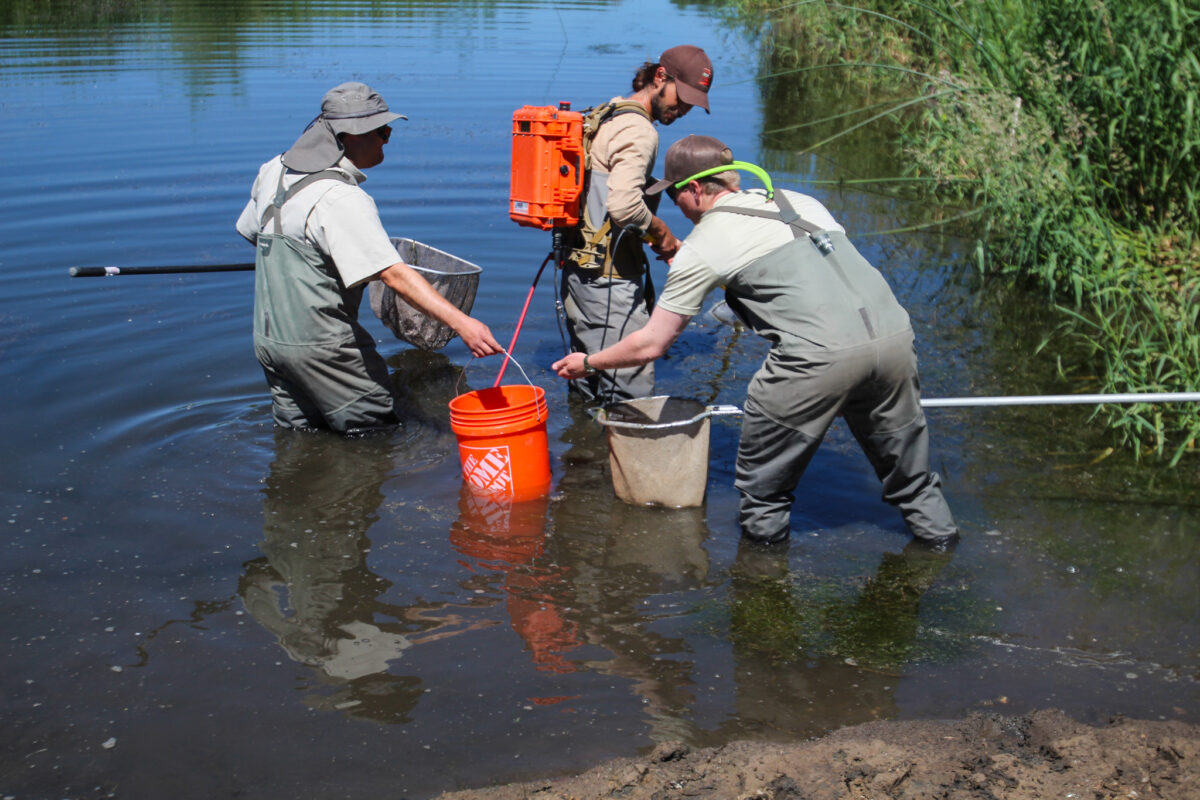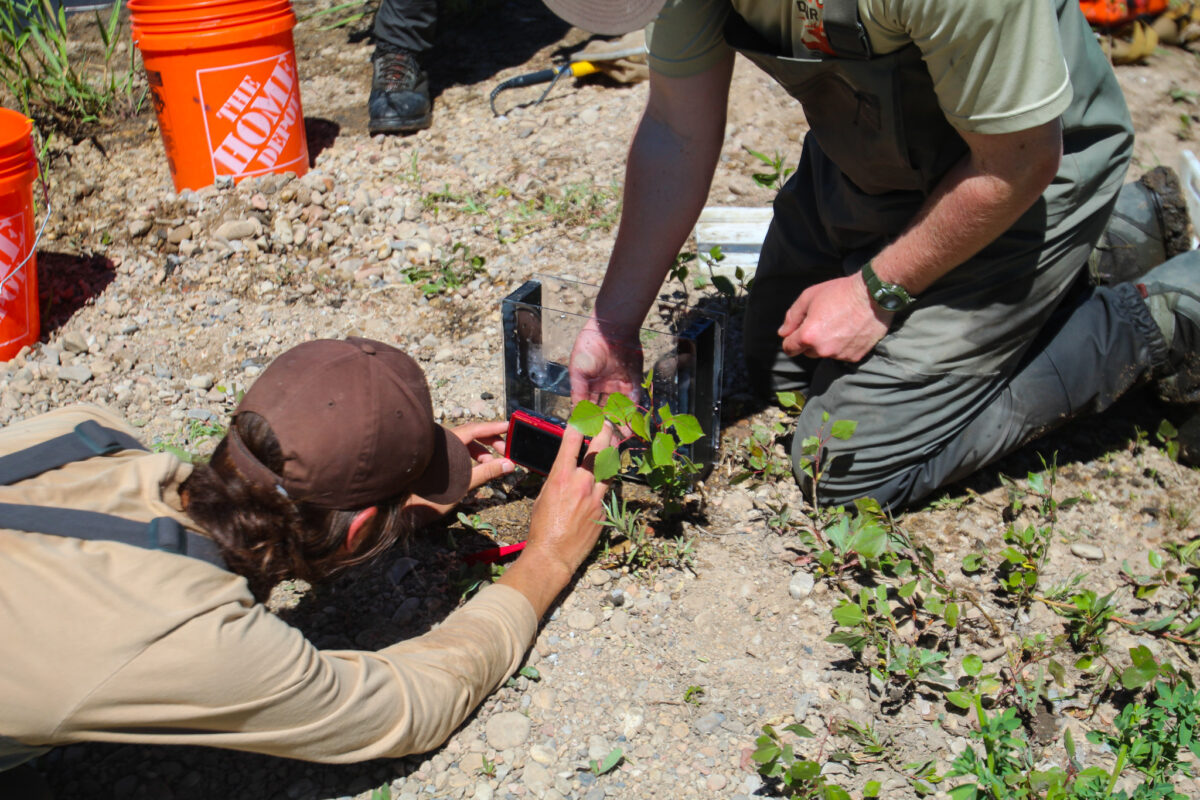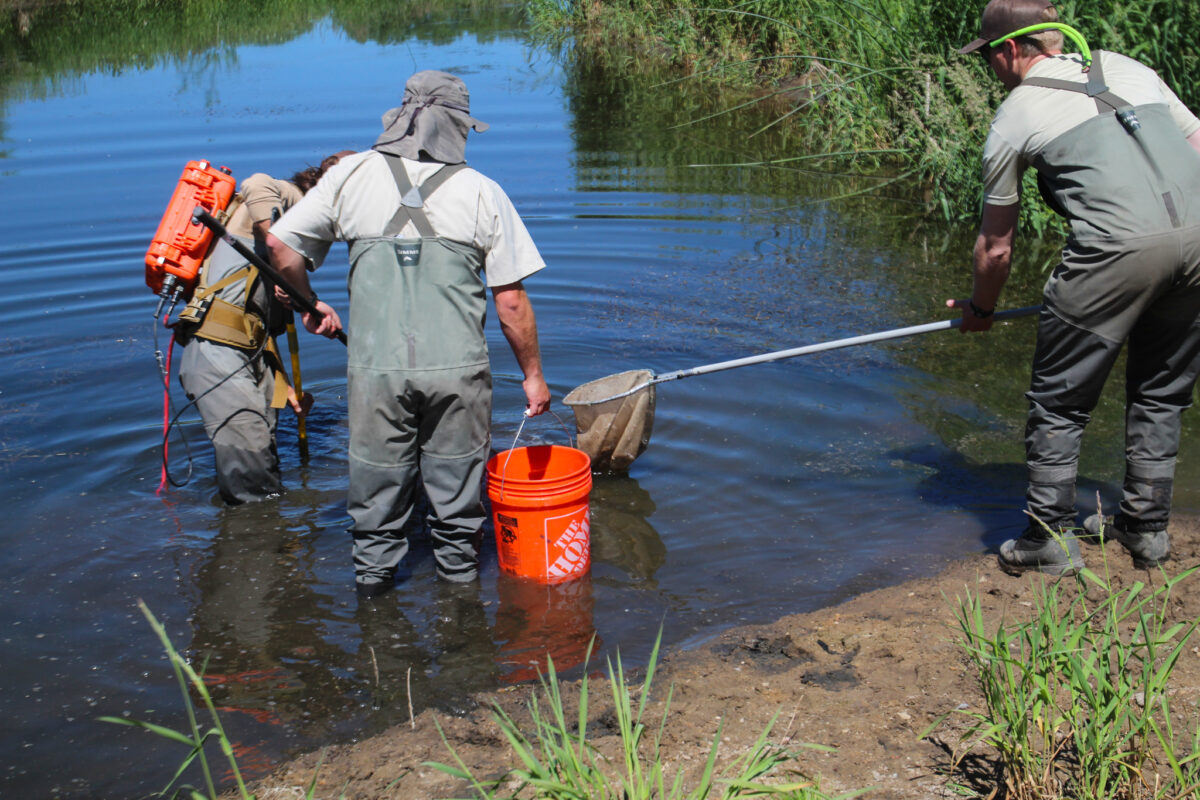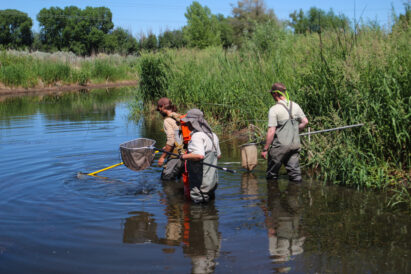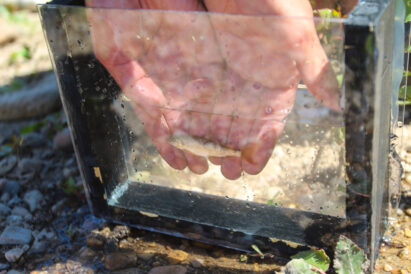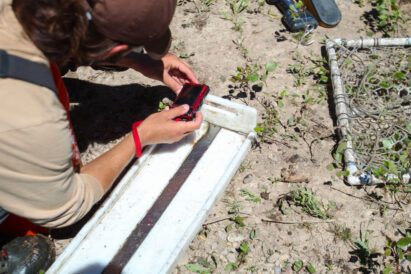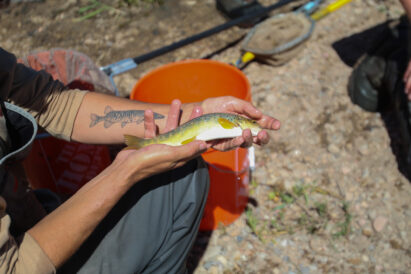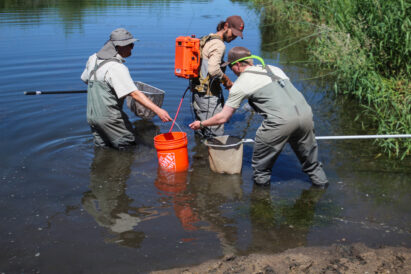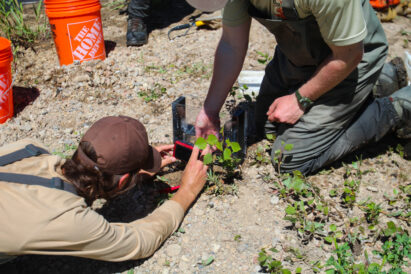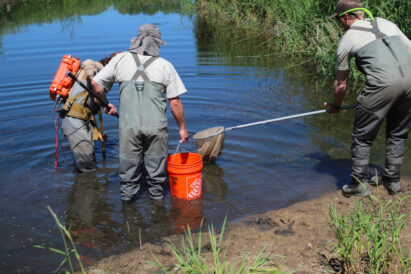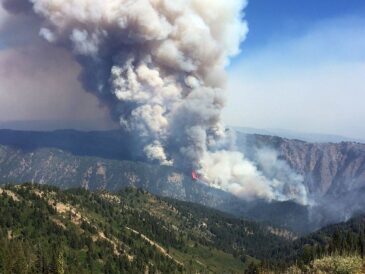Threatened June sucker population improving as state continues monitoring the species
- Utah Department of Natural Resources biologist Andrew Nagy and his colleagues search for June sucker fish in a small pond next to Hobble Creek in Springville on Wednesday, June 5, 2024.
- Utah Department of Natural Resources biologist Andrew Nagy shows a June sucker fish caught near Hobble Creek in Springville on Wednesday, June 5, 2024.
- Utah Department of Natural Resources biologist Andrew Nagy documents a June sucker fish caught near Hobble Creek in Springville on Wednesday, June 5, 2024.
- Utah Department of Natural Resources biologist Andrew Nagy shows a brown trout caught near Hobble Creek in Springville on Wednesday, June 5, 2024.
- Utah Department of Natural Resources biologist Andrew Nagy and his colleagues search for June sucker fish in a small pond next to Hobble Creek in Springville on Wednesday, June 5, 2024.
- Utah Department of Natural Resources biologist Andrew Nagy documents a June sucker fish caught near Hobble Creek in Springville on Wednesday, June 5, 2024.
- Utah Department of Natural Resources biologist Andrew Nagy and his colleagues search for June sucker fish in a small pond next to Hobble Creek in Springville on Wednesday, June 5, 2024.
Andrew Nagy, a biologist with the Utah Department of Natural Resources, recently made an exciting find in Springville’s Hobble Creek — wild juvenile June suckers.
Nagy said for the past 10 or 20 years, juvenile June suckers has been almost “nonexistent,” but last year wildlife officials started detecting them in Hobble Creek and the Provo River Delta.
In Springville, specifically, Nagy and other DNR members came across a “semi-isolated” pond adjacent to the river that connects during high-water flow but becomes detached during low flows, except for a small trickle in and out.
“And it turns out that it (the pond) is acting as a pretty great nursery for June suckers,” he said, adding that the isolation seems to be protecting the suckers from other predatory fish.
On Wednesday, Nagy and two of his colleagues ventured into the small pond, which is tucked between Hobble Creek and some farmland, to survey for June suckers.
They used an “electrofishing” method, where they used a probe to send an electric current into the water to stun fish for a few seconds while they came behind with a net to scoop up fish and place them in a bucket of water.
Wednesday morning, the group collected brown trout, mosquito fish, mottled sculpins and, most importantly, juvenile June suckers.
They found four or five small June suckers Wednesday, which Nagy said was pretty good compared to the past two decades, but it was less than what they had seen earlier this year. He added that many of the fish hide in the vegetation, evading capture.
Each of the June suckers that was caught was measured before being released back into the water. Each fish measured less than 100 centimeters long, with the smallest being 60 cm, which Nagy said was smaller than he had hoped.
The captured brown trout, which are not native to Utah, also were measured before being released, and the mosquito fish were counted but will be released elsewhere as the small, non-native fish harm the June suckers’ habitat.
June suckers are only found in Utah Lake and its tributaries, and the population used to be in the millions, Nagy said. However, as wetland habitats have been impacted by farmland and urban development and non-native fish like common carp were introduced, the native species were reduced to only a few hundred in the 1980s and ’90s.
The fish were put on the endangered species list but have been downlisted to “threatened,” and are still federally protected, as the population has climbed back into the tens of thousands.
While the population has increased, Nagy said about 90% to 95% of the June suckers in the wild have been released from hatcheries.
Ensuring the species can naturally maintain its own population without being supplemented by hatcheries is going to be a factor in getting them off the endangered list, Nagy said, as will be the actual population numbers.
“A lot of the fish in the lake today are hatchery fish. But obviously, if you want them to be fully recovered, you have to make sure that they’re reproducing naturally enough to sustain their population,” he said. “So a lot of recent effort has been on habitat restoration works in the tributaries.”
The Provo River Delta project is another area where groups are striving to rejuvenate the native fish species, with the project’s goal to create an improved habitat area for spawning.
DNR will do more surveying this fall in Hobble Creek, Nagy said, once this year’s larvae have a few months to grow. He said any eggs laid in the river this spawning season, which is about in May, should start hatching within a week.

